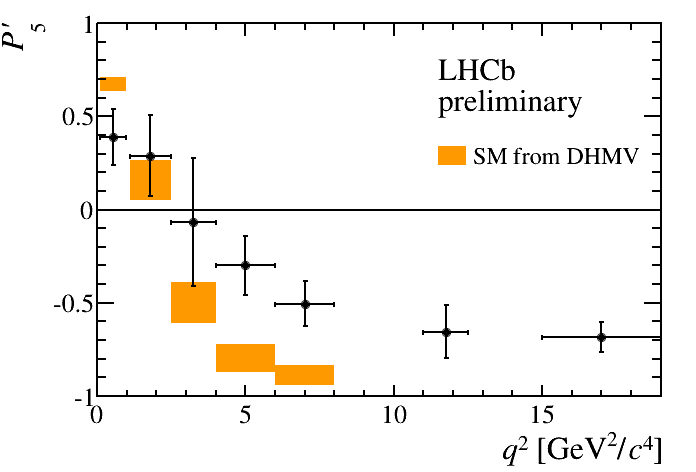Mesons are particles composed by a quark and an anti-quark (an introduction to the Standard Model and New Physics can be found here). In B-mesons one of the quark is the b-quark . Rare decays of B-mesons are a promising place to look for new particles. A prime example is the decay B0→K*μμ, which happens with a probability of about 1 in 1 Million. In this decay we measure the angles between the decay products, which are determined by eight quantities (observables). Some of these, in particular the observable known as P'5, show a discrepancy with respect to Standard Model predictions.

The Figure shows P'5 as a function of the invariant mass squared of the two muons. The Standard Model predictions are the yellow bands, while the points are the LHCb measurements. There is a striking disagreement between predictions and measurements, which can be interpreted as a sign of physics beyond the Standard Model. The most popular new physics interpretation of this discrepancy is the existence of a heavy Z' vector boson, not present in the Standard Model.
Recently it was pointed out that a possible Standard Model explanation exists for this effect, which involves a large breaking of QCD factorization (paper). At the moment it is not yet clear if this effect is a genuine contribution of new particles or more simply a QCD effect. Our group was the first to measure this effect and now it is deeply involved in the understanding of the B0→K*μμ anomaly.
